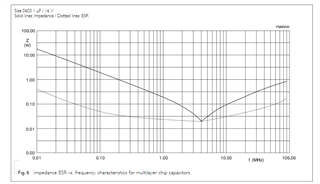Hello,
I have a Sallen key 2nd order filter with OPA2350 8VSSOP and 0603 0.1uF cap that is passing through noise from the switching power supply. The noise looks like a few 100 MHz cycles that happen 40 us. I was thinking to improve for the next revision the layout. This circuit goes to a piezo in a laser circuit so I need low noise.
I have 3 main questions:
Q1) I was thinking for a low noise op amp with thermal pad, with the goal of having even better grounding and shorter connection to the decoupling cap. I only get 17 dual op amp parts with these packages, which is not that much. Am I missing some packages that should have thermal pads? What packages should I look for?
Q2) Could someone recommend a good layout from an eval board or app note?
Q3) Should I switch over to a single channel op amp for better results in layout and parts selection?
I have 6 layer board with L1=top signal, L2=ground, L3= analog power with a section of 3.3V below the op amp).
I used this circuit with the layout.

R509 connection to in0 is ripped out.

I just left the capacitor on the side with vias to 3.3V and ground. Some of that idea came from Howard Johnson's site at:
http://www.sigcon.com/Pubs/news/9_07.htm
Decoupling cap impedance in old circuit with Yageo cap.

I will change to Murata 0603 or 0402.
https://ds.murata.co.jp/simsurfing/mlcc.html?lcid=en-us
Murata 0603

Murata 0402

Thanks,
Frank



